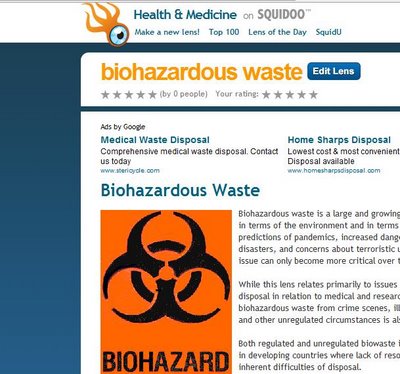Your cart is currently empty!

Is Squidoo for You?
You know you need links. If you have good stuff to offer, you’ll gain links naturally because people will link to you — that’s how it’s supposed to work, and why the number of links you have is used by search engines to help determine how good your website is, and how worthy of being offered to searchers.
Still, you’ll probably need to make some efforts at linkbuilding. Once you’ve done basic directories and asked the people who will say, “Oh, yeah, how could I have missed you?” though, gaining quality links becomes time-consuming. Analyzing the market to target websites, analyzing each website to determine how best to approach the webmaster, finding the webmaster, crafting that perfect request — a really good linkbuilder can do maybe three in an hour, and even then you have a 25-40% success rate..
It’s natural to wish there were good, ethical ways to create links yourself without having to persuade other people that your site is worth linking to.
There are such ways. One of the most fun is Squidoo.
At Squidoo, you can make lenses, which are organized directories, as the folks over there put it, of good stuff on the web.
You have a choice of modules, which are easy little forms for adding information and links. If you have a video at YouTube, or some good articles, or a useful page at your website, you can add them in and link them up. You can arrange for your Squidoo lenses to be announced automatically at your Twitter or Facebook page.
Here are some initial questions to consider when you’re using Squidoo for marketing:
- What should your topic be? You can make a lens about your company or organization. Nothing wrong with that. You can also make lenses about the topics you’d like to be associated with. So my new client BruiseMD, a bruise treatment, should have its own lens, plus lenses on bruising, bruise treatments, natural remedies, sports medicine, cheerleading, last-minute wedding emergencies (they thought of that — possibly they’ve actually known some groom who got a black eye at the bachelor party), fruit enzymes, and care of the elderly. There may be more, too. I’ll have a look at what’s already there on these and related topics and make sure that the new lenses complement rather than duplicating the available information.
- What should you include? Lenses have to be useful to be successful. I re-made a client’s lens last month and increased the traffic by 333.33%, with a conversion rate six times as high as they’re getting from their paid ads. How? By taking what was there — essentially an ad — and making it into a useful source of information. People avoid ads, but are avid for useful information, inlcuding useful information about goods and services that they need. So include your products, but also make sure there’s value to the reader. If that means including links to other information sources, so much the better.
- What next? Tell people about the lens and link to it at your social media sites, and perhaps at your website, too. You can continue making more and more lenses if you want, giving your site more and more links, but you can also keep your lenses up to date and tweak them to maximize traffic. You can keep track of visitors to the lens at the Squidoo site, and you can see whether the lens visitors click through to your site with your Google Analytics. In this way, you’ll have data on which to base your strategic decisions.
One of the great things about Squidoo is that there is a lot of help available there. Whether you’re a beginner or a seasoned lensmaster, you can find suggestions and support.
by
Tags:

Leave a Reply